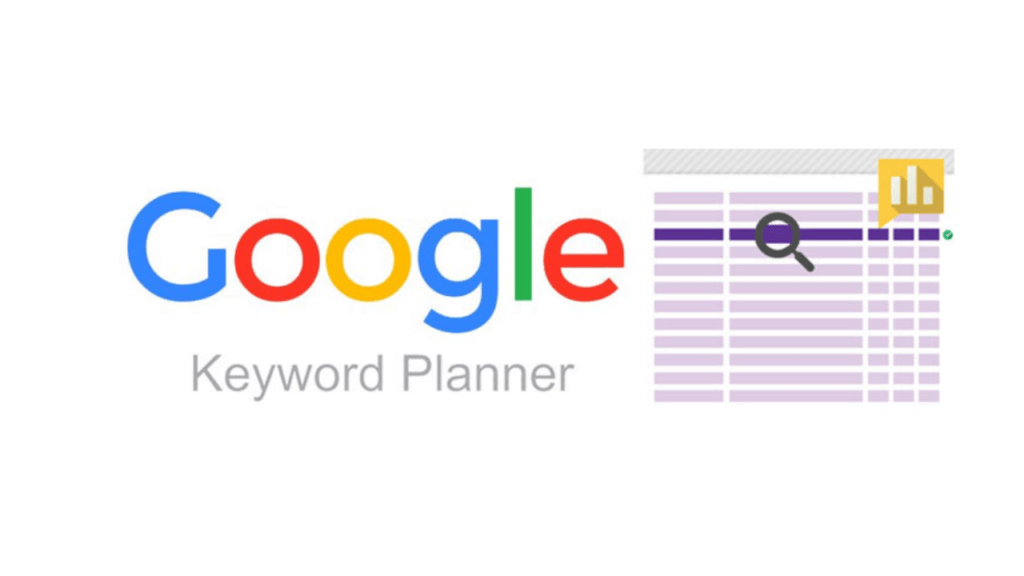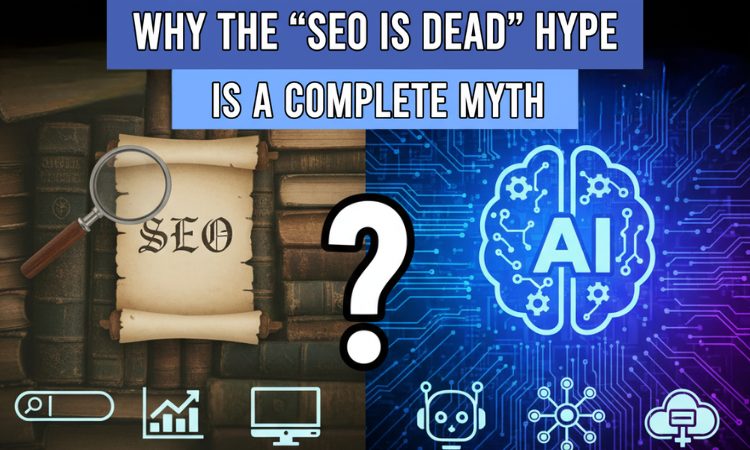Table of Contents
ToggleWhat are the keywords for PPC?
Everything begins with keyword research in pay-per-click marketing.
You type words into your search box to see what you’re looking for when you’re using Google keywords Planner or any other search engine. Google returns results – whether organic or paid ads – because the words in the search box are relevant. The results are there. And you need to apply for that keyword if your ads appear on the page. Keywords help in lowering your cost per click in google ads if its structured.
What are the Keywords
Single words or short phrases reflect the queries used in the search engine by individuals. Website owners or marketers choose keywords and utilize them as part of their SEO strategy to manage the development of content and to improve their websites.
You have a greater chance of seeing the search results when you connect your content production with the terms, topics, goods and services your target audience is looking for.
One reason why optimizing the keyword is crucial is to help explain what a web page is about to the search engines. This can also increase the likelihood of a webpage related to a certain query being found by the search engine.
It should be noted that Google is using numerous signals to evaluate if a page, not simply keywords, is relevant for a query. However, they are a factor, and later on I will provide statistics.
What Are Long-Tail Keywords?
Long-tail keywords are more particular keyword phrases that visitors are more likely to employ when they’re nearing a point of purchase or using voice search. They seem counterintuitive at first, but if you know how to use them, they may be really beneficial.
Managing long-tail keywords is just a matter of improving communication between your company and the clients who are already looking for what you have to offer.
Why are Longtail Keywords Important For SEO?
Longtail keywords aren’t that competitive: When it comes to SEO, long tails are MUCH less competitive than shorter “head terms”. (Which makes them easier to rank for)
Long tail keywords have high conversion rates: Long tail searches aren’t just longer. They’re also more specific. People that search for long tail terms tend to be much further along in the buying cycle compared to folks searching for head terms.

Why Are Keywords Important to SEO (and Marketing)?
Keywords help website owners with the following:
- Speak and identify target market language.
- Creating material that is helpful for the target population.
- Get material at the appropriate moment before the right people.
- Please let Google know that a web page matches the query.
- Improving the ranking of search engines by helping Google comprehend the content of a website.
- Drive to the right web pages more qualified traffic.
- Spread more visitors to websites, increasing duration on the site.
- Increase transformations by enabling customers instead of rivals to find you.
For SEO, it is all about this. In order to develop keyword research, you will grasp the description of your items or services for your target market. It also reveals how people enquire about your themes via a search engine.
You may develop ideas for fresh material, armed with these words and sentences. You may also optimize your website to fit the purpose of a searcher and answer queries of a searcher. Research and optimization of keyword search might increase your opportunities for displaying search results on page 1. Indeed, 2020 data reveals the majority of title tags containing phrases that corresponded exactly to or in part with the search query on the first page of Google.
In addition to classifications, keyword research offers additional advantages that can enable your users to better serve. For example, if you’re a bread firm looking for “organic bread” as a keyword. You have discovered that the expression “organic bread flour” is highly searched throughout your investigation. Is this a fresh opportunity for the product?
How to choose keywords
You must thus make sure you apply the right keywords to win at PPC. This procedure has numerous moving components:
- PPC Keyword Research: Using keyword research instruments and data analysis, the list of phrases most appropriate for your business offerings is accessible. The objective is to provide the results of the search when consumers search for key goods or services in their business.
- Keyword Grouping and Organization: PPC accounts organise keywords into closely connected keyword groups.
- Negative Keywords: Negative keywords are an undesirable way of clicking. You’re saying Google what you are seeking without displaying advertisements with a new bad word.
- Keyword Bid Optimization: It is essential to focus on your high-performance keywords, while everyone has a limited budget without payment.
As you can see, PPC does not just discover the right keywords. To get high ad rankings at minimum costs, you must strive for relevancy across the whole account. That shows you’ve got:
- An organized account structure
- Targeted, compelling ads, and
- Optimized landing pages
All of these factors contribute to the value of your keyword – the parameter important for displaying your ads and the amount you pay for each ad. You can study more about these topics later in the course work. Now concentrate on keywords and how they function in your PPC.
Keywords vs Search Queries
“Keyword” and “Search Question” in an informal language. How is a keyword different for a search query? A keyword is a summary we derive from several research enquiries.
A search engine user inserts the real term or string of words in the search field.
We are looking for keywords for search marketers.
For example, “sunglasses” may be one of your goal keywords. You may search your advertisements using the variants in your sunglasses, such as “female sunglasses” or “aviator sunglasses.” Your primary keyword search returns to your map.
Keyword Match Types
One of the first things you have to understand about keywords is that there are several types of matches. It works differently according to what your keyword is. This is one of the mystery “hacks” which the PPC has always acknowledged .There are four separate matchups. The difference between match types is how far each match type may be extended.
• Broad Match
Add a keyword in large match to add the following: Floating shoes Keywords are like firefighting in broad matching. You choose the whole region (keyword), however Google can expand your phrase to searches that are sometimes completely different to what you would expect.
Broad Match Pros:
- A lot of mistakes and variations of keywords can be handled with one motto.
- High-converting keywords you’ve never dreamed are available.
- Broad match keywords are far more clicked and printed compared to other match types.
- It can be quite effective!
Broad Match Cons:
- Multiple searches = High cost.
- High possibility of needless inquiry losing money.
- Difficult to manage, especially with single terms.
Broad Match Modified
Add it with plus signs to add a keyword in a wide match modifier: +Marketing +Digital.
Broad Match Modifier Pros:
- A lot greater control over which searches your advertisements are seen.
- Very helpful to locate new keywords for long-distance.
- Although the search query contains an additional or alternative word order, your advertisements are still displayed.
- Catches misspellings.
Broad Match Modifier Cons:
- Lower than Broad Match search volume.
- Can still be extended to queries which are apparently unrelated.
- No simple method to build Broad Match Modifier keywords.
Phrase Match
In order to put a term in a matching sentence, add quote marks “Digital Marketing”
Phrase Match Pros:
- Greater control over which questions are displayed.
- Very effective for sentences.
- Effective for avoiding greater expansions.
Phrase Match Cons:
- Reduced search volume.
- Is much more restricted than Broad Match Modifier with little advantage.
Exact Match
To add a keyword in exact match, add it with brackets: [digital marketing]
A matched keyword more or less. Only search sentences corresponding to the almost accurate keyword can show your ad. Corresponding keywords are similar to keyword type snipers. Precise, straightforward and specific.
Exact Match Pros:
- You know what search is being used precisely.
- Perfect for highly conversion keywords controlling.
- What you see is what you get.
Exact Match Cons:
- Much lower search volume for your keywords.
- You can’t discover new keyword variations or long-tail keywords.
- You miss “one time searches.”
If you master them fully, you can continue with an advanced type match that mixes phrase match and large match modifier in one keyword.
Which Match Type Should You Use?
I suggest you utilize the Broad Match Modifier and Exact Match when you first set up your campaign. As you can see from my assessment of the four-game kinds, each one attracts distinct visitors; thus, you mostly employ them in a successful Google Ads campaign. The only thing, (and this is a major one), is to wait until you truly know what you are doing with the wide match.
When using wide matching terms, your Google Ads performance may simply be optimized without any plan or procedure. Gradually, when your campaign collects statistics, some sorts of matches for a certain keyword may not benefit, while others will not.
Negative Keywords
Negative keywords are utilized to rule out the search appearance of your advertising. We can state that you’re a plumbing corporation, but then you may enhance the performance of Google Ads campaigns without searches for “jobs” or from cities you do not service. Within e-commerce you can declare, “Trail” can’t activate your advertisements. If you offer running marathon shoes, but not running shoes.
This is strong because for each click you pay more or less the same for the same term. This means that you may finally pay as you would have anticipated for clicks that don’t matter as much for your business. This is one of the primary reasons Google Ads can’t be done by novices.
You could believe you’ve selected the appropriate keywords, made nice advertisements and sent good traffic to a website. However, beneath the phrase, your advertisements typically come with search words not so relevant as the keyword you’ve included.
You can, and should, work with negative keywords in two capacities:
- Before launching your campaigns
- After launching your campaigns
Here are some tips for finding negative keywords for your PPC campaigns:
- Maintain an eye on your inquiry reports: This is an excellent approach to find out what searchers want while Google is sending your announcement. If in your search query report you find words that you know are not suitable for your account, designate them as negatives before you risk presenting them again.
- Know your negative match types: The correspondence type you give to negative terms impacts enormously on the traffic it blocks. Use broad match negative as a general rule to exclude any queries which contain your negative phrase, for instance, “free.” Use negative phrases and match to exclude more precise inquiries that include bad keywords for long-dose.
- Explore negative keyword options before your campaign goes live: The more negatives you establish, the more cash you save right off the start before a campaign goes live. Many tools are available to assist you to identify possible negatives, based on your present keyword choices.
- Remember that you can apply multi-level negatives: You will probably find several negatives that match well in several ad groups or campaigns.
- Don’t go overboard: Negative elements are necessary in any PPC campaign, but a badly utilized negative can damage your account and ruin your impression volume. Be sure that if a search engine uses this keyword, you are not likely to convert them to your site when you put any bad items.
When you finish discovering your campaign keywords, use Google keywords Planner for at least half an hour to see what is going on. Add unrelated terms that you find to be negative. A tonne of typical negative keyword lists can be used.
You should examine your search term report on an ongoing basis once you begin your advertising. This is exactly where your search keywords can be seen, which your advertisements prompted. Use this knowledge to continuously add new negative terms.
How Do You Choose the Right Keywords?
This subject might survive by itself in a post, as it often has. Here’s a wonderful resource for starting you.
Based on your demands and limits, this method is extremely scalable. You can spend over $250 on tools or anything in four or forty hours. While I strongly advise you to study this subject very closely if you want to perfect your skill, below will be a brief introduction to selecting the ideal keywords for SEO.
- Don’t start with keywords: Just be human before you put your SEO hat or your commercial hat. Learn from your clients about your clients. Try to develop some true empathy and understanding for the consumers you serve and the viewpoints that they have before digging into instruments and tablets.
- Build a seed keyword list: Using what you have acquired in step 1, and knowing where the demands of your clients and your company solutions connect, create your initial word and phrase list which define your core product effectively.
- Gather current keyword data (if your site already exists): Creates a list of the traffic to your site at the moment (and almost). Here are several keyword ranking tools for this stage:
- Google Search Console
- Ahrefs
- SEMrush
- Moz Keyword Explorer
- Expand the list using various keyword tools: Expand the list of keyword groupings, synonyms, common changes, and long-tail permutations from steps 1 to 3. In addition to the above stated, these keyword research tools are ideal for proposals to extend your list:
- Keywordtool.io
- Keywords Everywhere (within Google search results)
- KWFinder
- Group terms by search intent: Categorize your keywords in such a manner that they are easy and helpful to you and anybody else. This is possible by kind of audience, subject, funnel phase, or by any other form of purpose.
- Map keywords to content: Select 1-4 keywords that will be used on each page based on a fair mix of keywords, relevancy and volume Search (while considering organic click share). Once selected, discover semantic and long-stage modification phrases to support your keywords.
- Do it all over again: Google has had time to respond and you can collect enough data, rinse and recall after your keyword strategy is established. You don’t call optimization of the search engine.
How Do You Use Keywords to Optimize Your Site?
Like selecting keywords, your websites can reside on your own blog post to optimize keywords.
However, here are a few tips to get started.
Where to Add Keywords on a Webpage
- URLs: Rarely do the URLs change, they are extremely apparent and the whole page describes them. Google values what you say for those reasons.
- Static content: Search engines improve dynamic content considerably better. Static content is an indexable almost guarantee.
- Title tags: Title tags impact classification and click rate (CTR), and keywords can aid with both when worded properly.
- Meta description tags: In contrast to title tags, meta descriptions have no effect on Google’s ranking. They may, however, also enhance the CTR.
- Most visible content: The task of Google is to understand the way we do content. An H1 tag at the top of the page receives many more eyes than the bottom of the boilerplate. Whether it is a tag, early body, or a strong sentence, SEO usually has the most apparent material.
- Internal links and surrounding content: Added keywords to your link’s anchor text to show Google what your page is all about. Likewise, neighboring material is also important for Google since the text indicates your page and is utilized to explain the target page to a lesser degree.
- Image and video file names: Instead of allowing your phone to name your image or video, which generally includes a random and unreasonable name, give it a descriptive name with the appropriate term.
- Image title attributes: Image titles may not operate the same way on all browsers, therefore Google may not add a lot of weight to that material. But if you are able to integrate keywords elegantly, go for them.
- The video closed captioning and/or transcripts: Some movies include terms that are highly relevant, yet Google doesn’t have any notion. Ensure that your indexable closed subtitles or transcripts include what you hear and see.
Keyword Integration Tips
- Don’t overdo it:Over-optimization is something that is genuine (or “keyword stuffing.” You may turn your clients off and send them to the dog (or panda) home of Google. Each of the aforesaid locations was mechanised, used and tarnished. Ask yourselves whether the experience harms or benefits the user. Based on it, make your decision.
- Ignore the meta keywords tag:The meta keywords tag gets little, if any, attention from the main search engines. Don’t waste your time here.
- Don’t optimize each page in a vacuum:You must look at your term by putting all pages into perspective, unless you have a one-page site. This prevents any gaps or cannibalization of keywords which might happen when you operate in a silo on each page.
- Test everything:If you have the option of working on sites with a large number of pages, you may put up some useful tests to finish your approaches.
Ready? Start writing!
In an ideal world, you would do your keyword research, make a beautiful Excel table and create landing pages for each one. Your site structure would be flawless and you would blog and write every day making your site rank higher and higher in Google. But, we live in the real world.
Keyword research should be the start of any sustainable SEO strategy. The result will be a long list of keywords for which you’d like to be found. But the hardest part is still ahead: writing all that content. You should write articles and blog posts on every single keyword you would like to be found for. That’s quite a challenge. Check out our Ultimate guide to SEO copywriting to get started!








